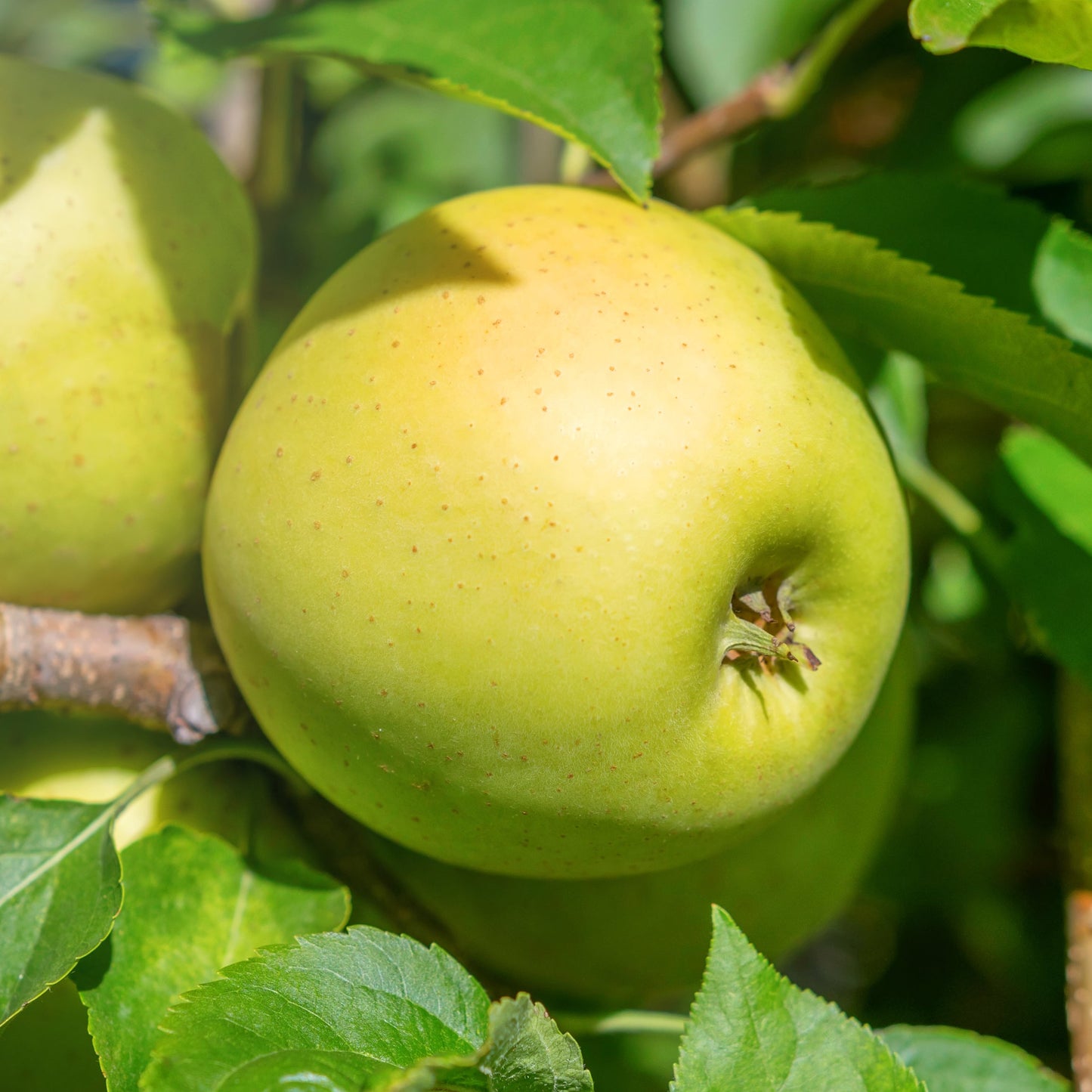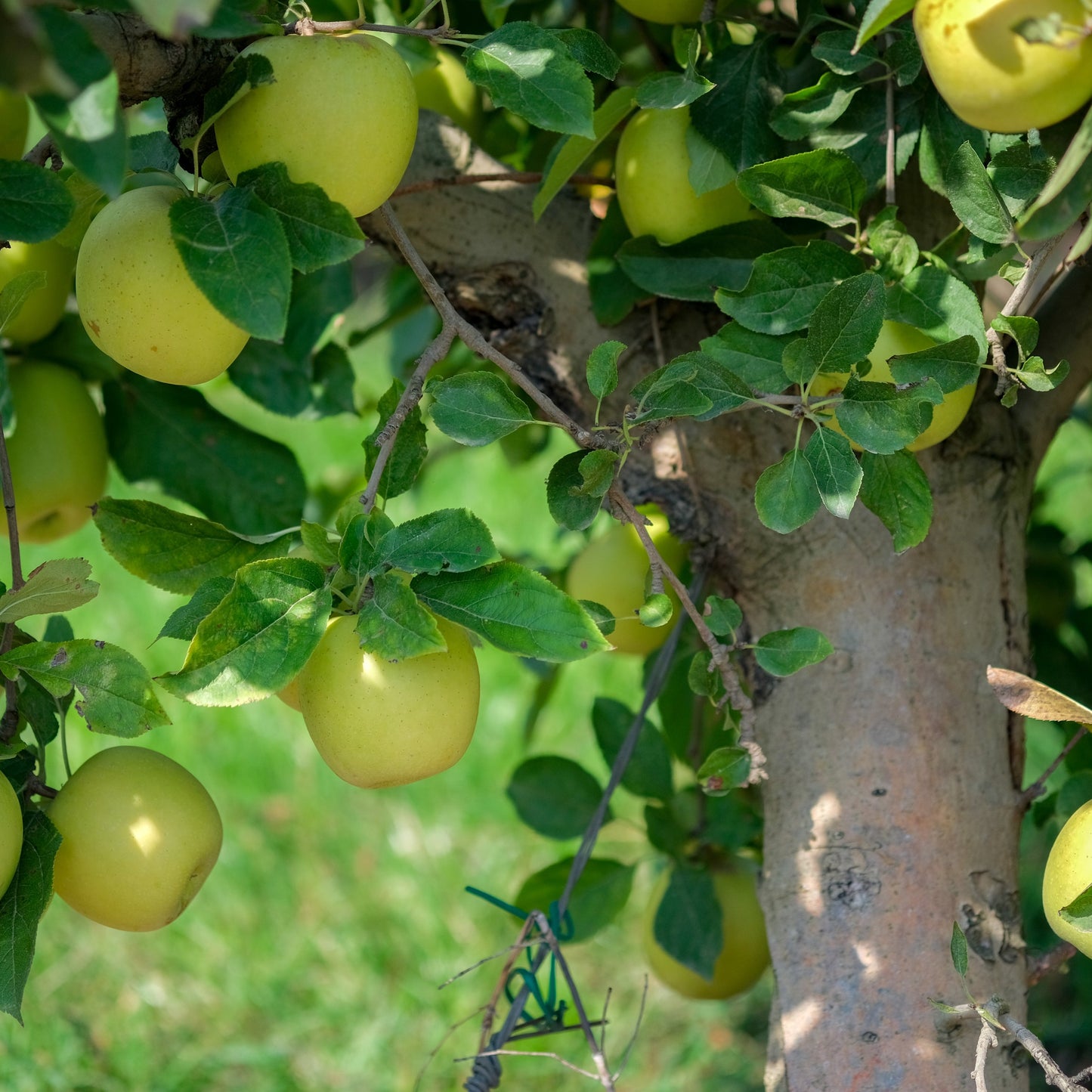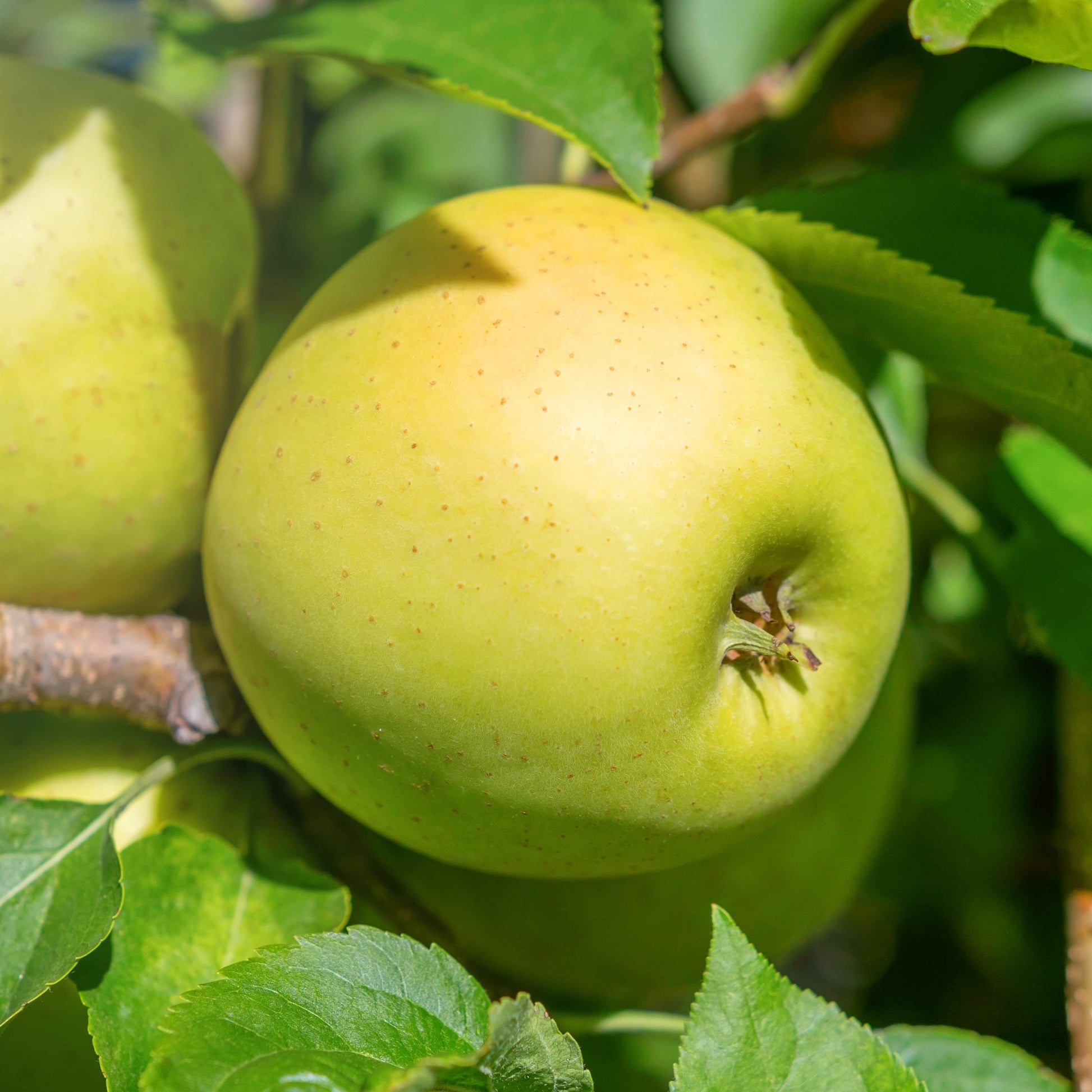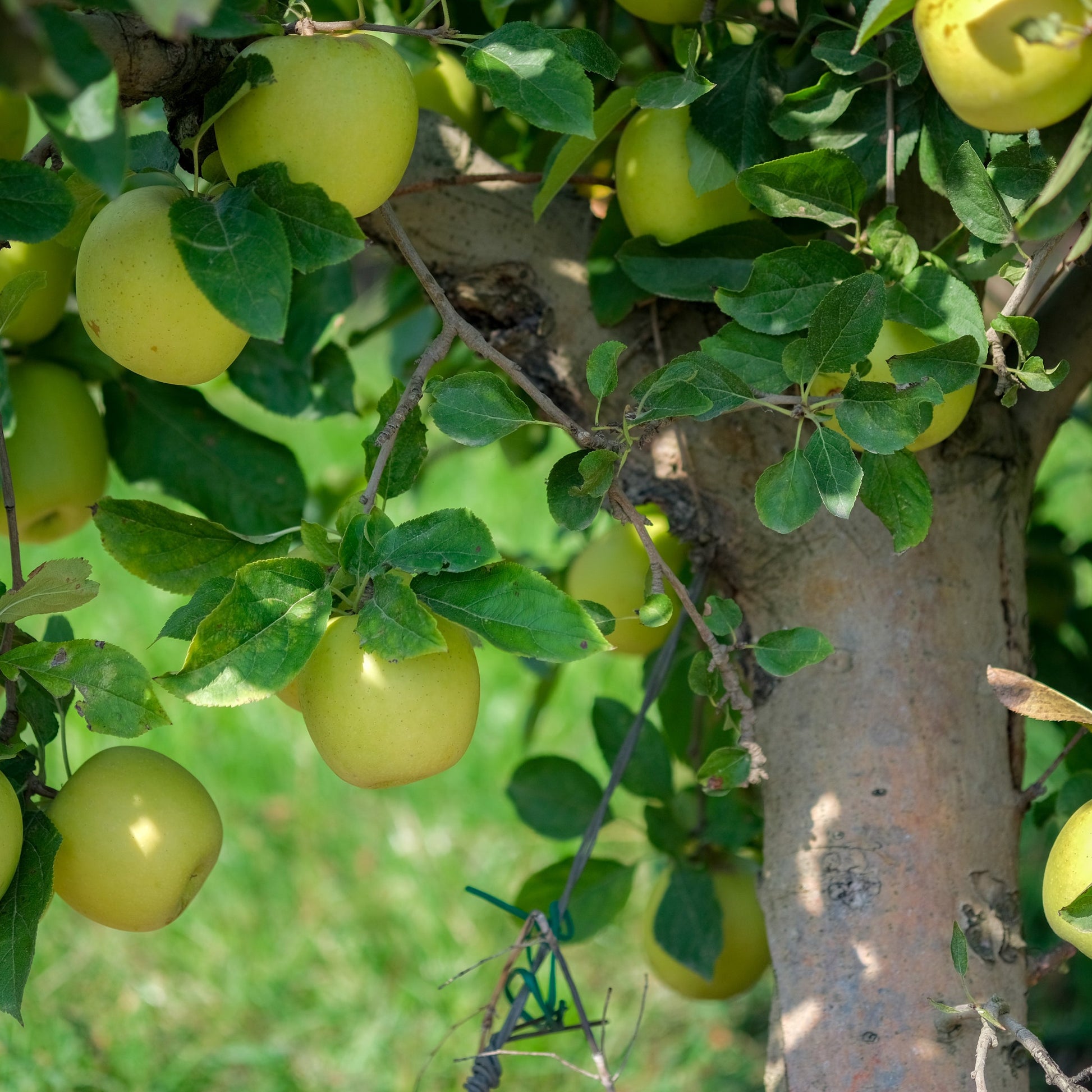Limited Quantities - Reserve Now For Fall
Yellow Delicious Apple Tree
Yellow Delicious Apple Tree
Couldn't load pickup availability
Malus domestica ‘Yellow Delicious’
The Yellow Delicious Apple Tree is a high-yielding, self-pollinating fruit tree renowned for its sweet, crisp, and juicy golden apples. A versatile and adaptable variety, it thrives in a wide range of climates and soil conditions, producing delicious apples perfect for fresh eating, baking, applesauce, and cider-making. With beautiful spring blossoms, vibrant fall foliage, and excellent disease resistance, this low-maintenance tree is an ideal choice for home orchards, edible gardens, and commercial production.
Yellow Delicious Apple Tree
| Attribute | Details |
|---|---|
| Variety | Rooted |
| Botanical Name | Malus domestica ‘Yellow Delicious’ |
| Common Names | Yellow Delicious Apple, Golden Delicious Apple |
| Mature Height | 12-15 feet (dwarf), 15-25 feet (standard) |
| Mature Width | 10-20 feet |
| Growth Rate | Moderate (1-2 feet per year) |
| Lifespan | 35-50 years |
| USDA Hardiness Zones | 5-9 |
| Sun Preference | Full sun (6+ hours of direct sunlight) |
| Soil Type | Well-drained, loamy, sandy, or clay soils |
| Soil pH | Slightly acidic to neutral (6.0-7.0) |
| Water Needs | Moderate; consistent moisture needed for fruit development |
| Flowering Season | Spring (April-May) |
| Flower Color | White to pale pink |
| Fruit Ripening | Mid to late season (September-October) |
| Fruit Characteristics | Large, golden-yellow apples with crisp, sweet, juicy flesh |
| Wildlife Attraction | Bees, butterflies, birds, deer |
| Growth Habit | Upright, rounded canopy |
| Self-Pollinating? | Yes, but higher yields with a pollinator tree nearby (e.g., Red Delicious, Fuji, Honeycrisp) |
| Chill Hours | 600-700 hours |
| Landscape Uses | Home orchards, edible gardens, pollinator gardens, specimen tree |
| Maintenance Level | Moderate |
Environmental Benefits
🌸 Pollinator-Friendly – Produces fragrant spring blossoms that attract bees and butterflies, supporting pollination and local biodiversity.
🌎 Sustainable & Nutritious – Reduces reliance on store-bought produce by providing fresh, organic apples at home.
🌳 Carbon Sequestration & Air Purification – Helps absorb CO₂ and air pollutants, improving environmental health.
💧 Erosion Control & Soil Stability – Root system helps stabilize soil and reduce erosion in home landscapes and orchards.
Pros & Cons
| Pros | Cons |
|---|---|
| Self-pollinating; does not require another tree to produce fruit | Requires consistent watering for high fruit quality |
| Produces large, sweet, and versatile apples | Regular pruning is needed for best fruit production |
| Thrives in a variety of soil types and climates | Can be susceptible to apple scab and fire blight if not properly maintained |
| Long fruit storage life (up to 3-6 months when stored properly) | May attract deer, birds, and insects |
| Beautiful spring blossoms and vibrant fall foliage | Takes 3-5 years to begin fruit production |
Planting & Care Guide
- Spacing: Plant 12-20 feet apart for standard trees, 8-12 feet apart for dwarf varieties
- Soaking: Soak bare root in water for 6-12 hours before planting
- Planting Depth: Dig a hole twice the width of the root system, ensuring roots are level with the soil surface
- Mulching: Apply a 2-3 inch layer of mulch to retain moisture and suppress weeds
- Pruning: Prune annually in late winter or early spring to remove dead wood and improve airflow
- Fertilization: Apply a balanced fertilizer in early spring to promote strong growth and fruiting
- Watering: Water regularly, especially during hot and dry periods, ensuring deep soil penetration
The Yellow Delicious Apple Tree is a top choice for home gardeners and orchard growers looking for an easy-to-grow, productive, and delicious apple variety. Whether grown for fresh eating, baking, or cider-making, this versatile tree provides years of beauty, fruit, and environmental benefits.
Share




